Art Fairs
Global Emerging Art Finds Its Market at START Fair 2016
In its third edition, the London fair cements its position and reaches new collectors.
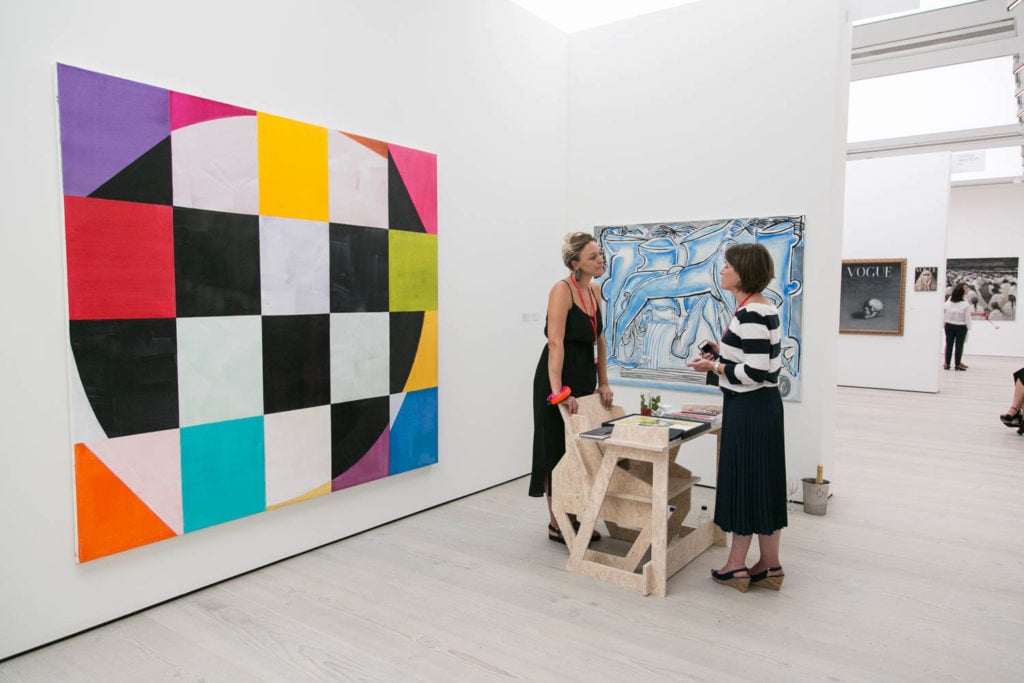
In its third edition, the London fair cements its position and reaches new collectors.

Hettie Judah

When, exactly, did artists start emerging? And what are they emerging from? Some kind of studio-batcave hybrid? Clouds of skunk-scented smoke? Parenthood? A period of intense post-adolescent navel-gazing? The abyss of teaching at art school? Whatever combination of early career/less known/recently rediscovered, emerging artists—and the widely scattered scenes that nurture them—are the stock in trade of London’s START art fair, now in its third edition.
As director Niru Ratnam notes in the fair’s catalogue, at a moment when the political mood is swinging towards reinforced borders, it’s significant to celebrate globalization. START has galleries from Heyri, Marbella, Cluj, Kaunas, Tblisi, and other locales well off the beaten art track, showing alongside galleries from Seoul, New Delhi, London, and New York. The crowds that gathered for the VIP view offered a vision of London as a properly global city in which Chelsea’s neo-Sloane Rangers have roots in Russia, the Middle East, Korea, China, India, and Pakistan.
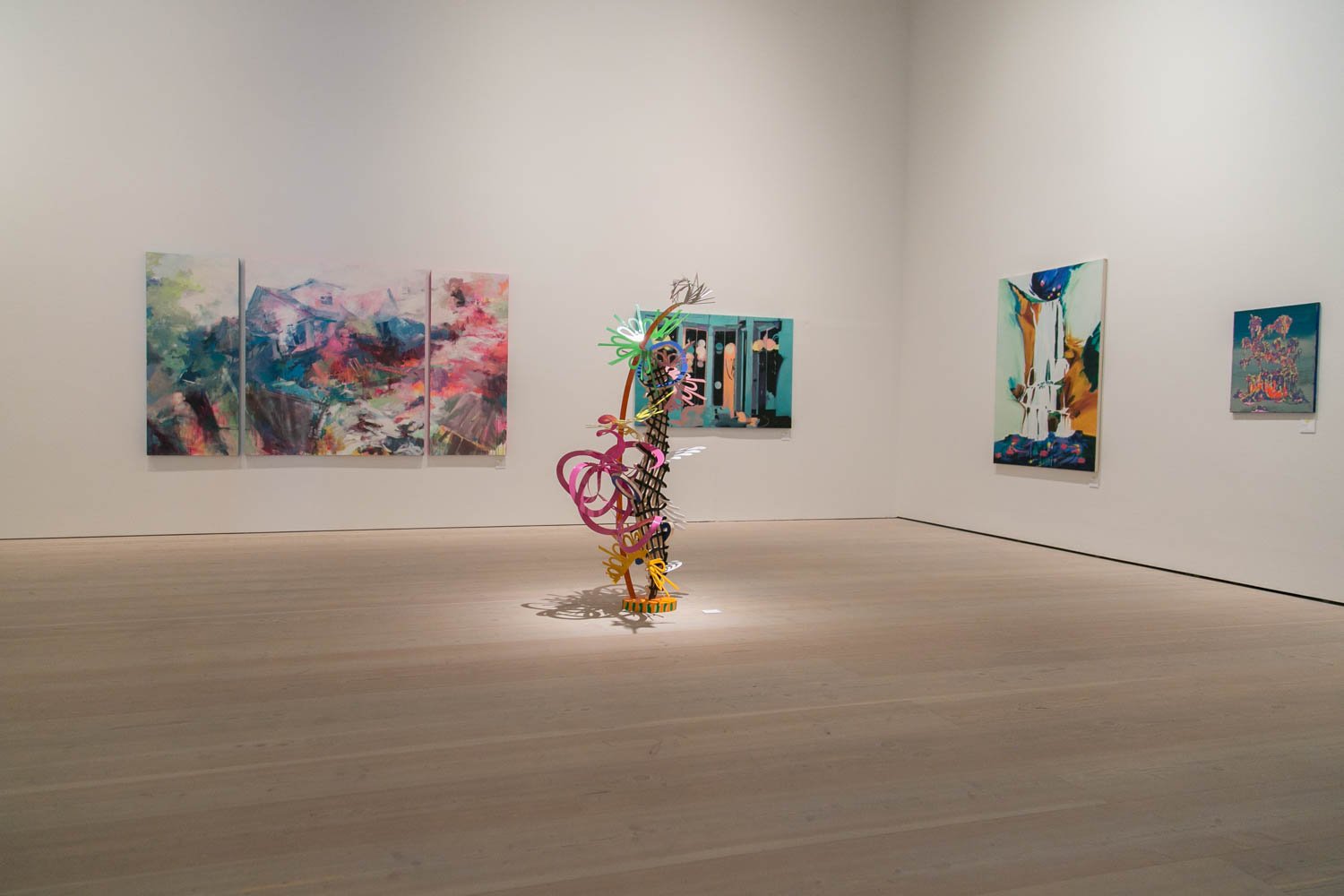
Installation view of Future Island at START Art Fair, Saatchi Gallery, 2016. Courtesy START Art Fair and the Saatchi Gallery.
There were quantities of ersatz Pop Art and large colorful abstract works, a number of series that paid homage to mid-century poster graphics with a flair better suited to the greetings card market, and atmospheric photographs of beautiful women that would have nestled happily in the pages of an upmarket fashion magazine.
Mercifully there was markedly less naked lady art than one usually gets at, say, Frieze London. By and large, this was a fair offering works for the home rather than works to be amassed and consigned to Freeport storage. Prices ranged from £450 for a small work by David Quinn (Gibbons and Nicholas, Dublin) to some £22,000 for a rug work by Faig Ahmed.
Ahmed, one of the more “emerged” artists on show, was a Jameel Prize nominee in 2013 and has works in the collections of LACMA and the Seattle Art Museum. His hand-knotted rug works, in which traditional Persian and Azeri patterns warp, pixelate, drip, melt, and unravel, provoked a satisfying double take. The rugs are made in traditional workshops in Azerbaijan, and are intended to provoke a jolt of mindfulness in the makers: rather than following instinct in creating patterns that have gently varied over hundreds of years, suddenly each knot is filled with precise intent.
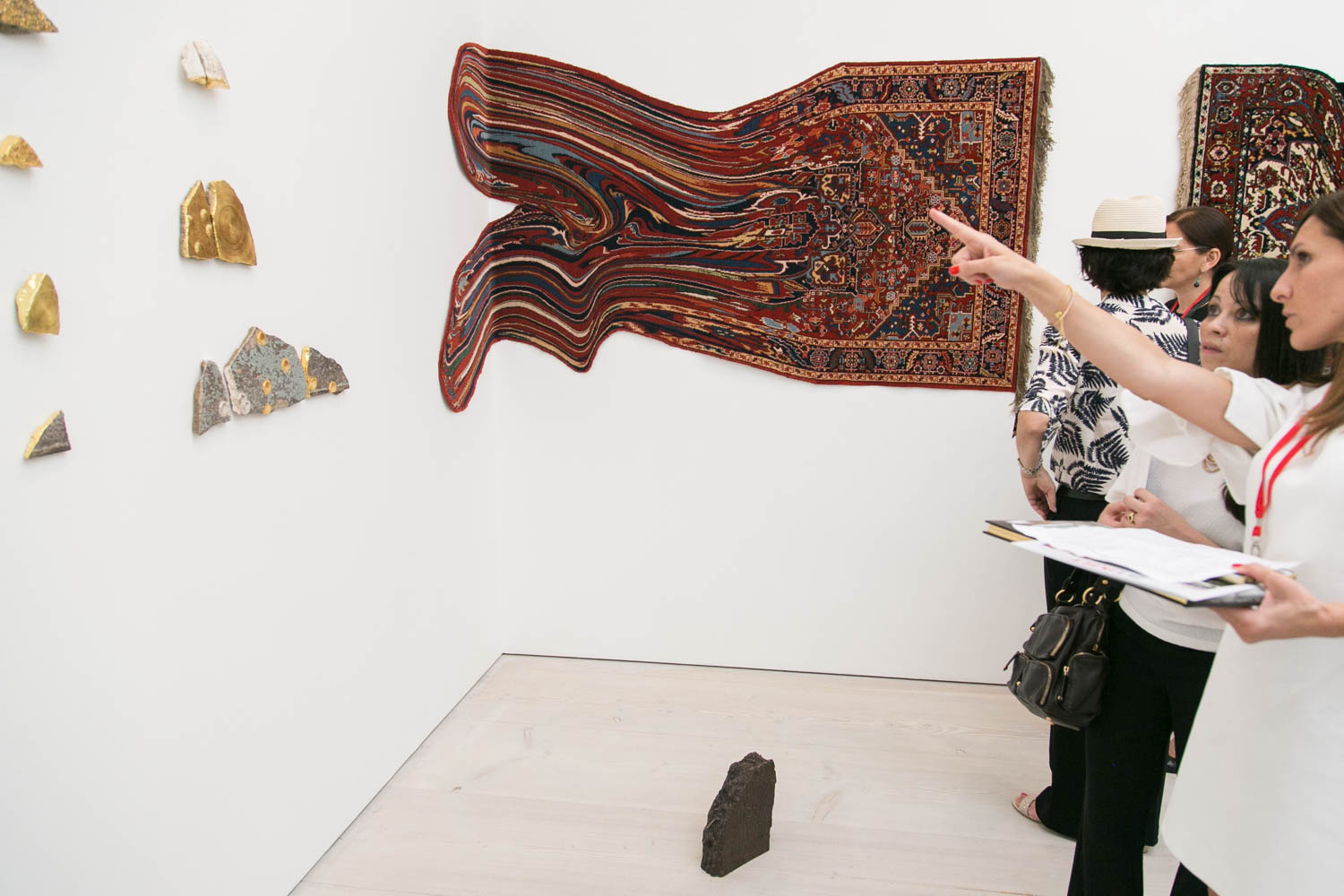
Installation view of the Montoro 12 and Sapar Contemporary booths at START2016, featuring works by Faig Ahmed. Courtesy START Art Fair and the Saatchi Gallery.
It says something positive about the START spirit that Ahmed’s two gallerists—Montoro 12 from Rome and Sapar Contemporary from New York—took twinned booths so that both could show his work in concord. Sapar were also showing atmospheric gold leaf-covered architectural and archeological fragments by Shinji Turner-Yamamoto (the Pentimenti series) and fog-on-black photographs of the crater of Etna by walker/artist Eric Bourret, in what was, overall, one of the fair’s strongest group displays.
Ahmed’s rug works were among a number of attractive series that drew strongly on craft traditions. Sumakshi Singh was showing with New Delhi’s Exhibit320 as well as in a stand-alone audio-visual work as one of the START Projects. Drawing on botanical knowledge she acquired watching her mother create gardens in various locations around India during a peripatetic childhood, Singh lifts delicate embroideries of flowers and garden scenes off their backing fabric to float as ghostly skeletons behind glass. Described by the artist as lace drawings, they have an ephemeral delicacy that speaks of memory and transience. Her installation In the Garden (2016) brings the lace works together with stop motion animation of plants and insects to create a colourful, lacy backyard arcadia.
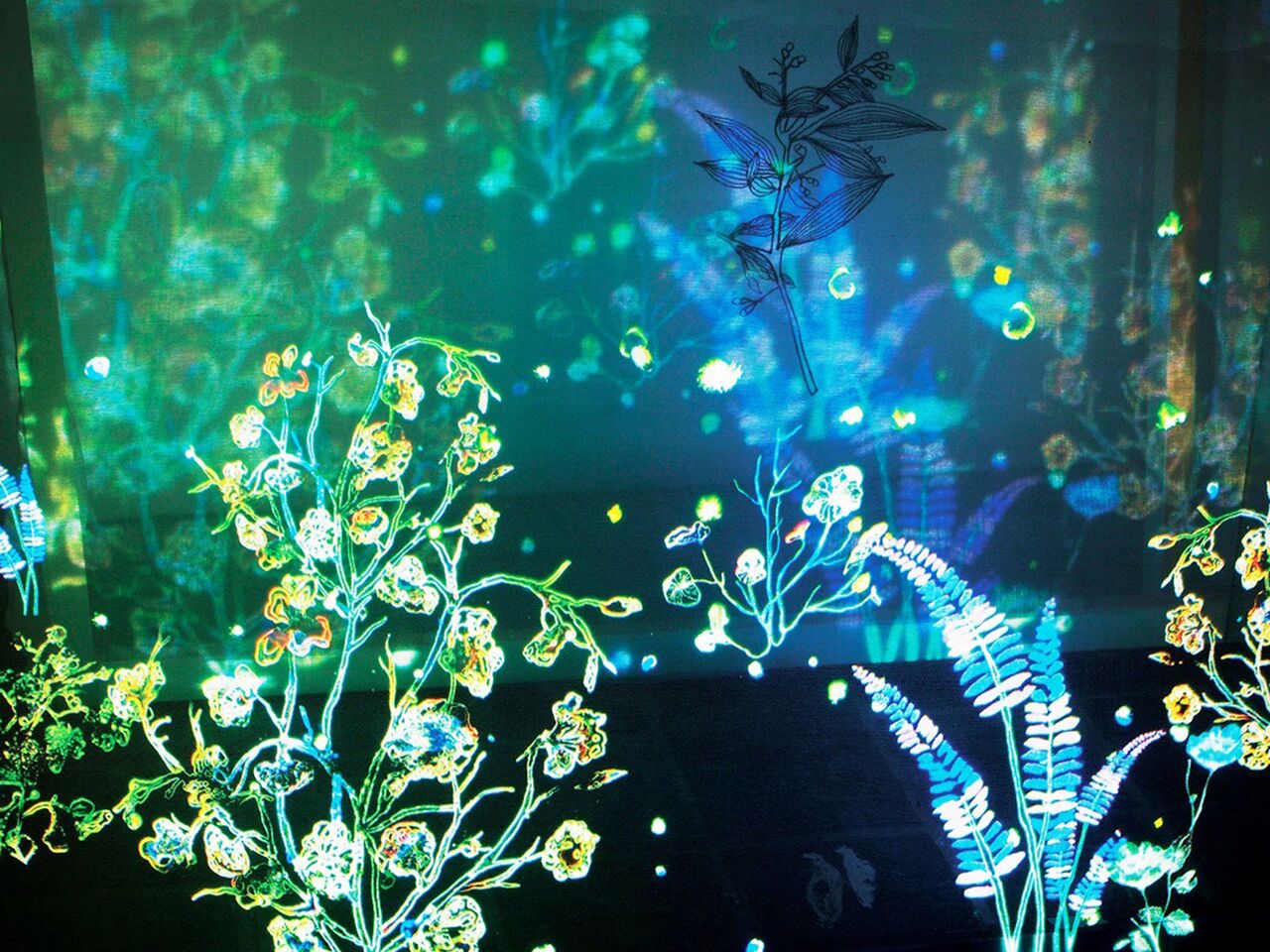
Sumakshi Singh, In The Garden at the booth of Exhibit320. Courtesy START Art Fair and the Saatchi Gallery.
At Paris-based Galerie Da-End, Lucy Glendinning’s figure of a small child and framed relief of an ear—both fledged in guinea fowl, quail, and goose feathers as if bona fide taxidermy—drew admiring crowds.
Two galleries from Hong Kong showed strong solo presentations of works by artists unfamiliar to the London audience. Karin Weber Gallery carried glossy trompe l‘oeil forms by the German-born artist Willi Siber, which float somewhere in the intriguing hinterland between paintings and sculptures with the painstaking deployment of epoxy and enamel.
Meanwhile, Artify Gallery showed elements from two poised and haunting series by the Malaysian artist Eiffel Chong. In This Used To Be My Playground, Chong captures the deserted spaces and abandoned human debris that remains in uninhabited buildings, with an eye that searches for the intimate and personal rather than a fix of “ruin lust.” In his milky, pinkish Seascape series he portrays elements of the earth from the vantage point of the sea—rocks, posts, a restaurant sign, the Hong Kong harbour—emphasising the uniting element of water, off the shores of no matter which country, through a single, steady horizon line.
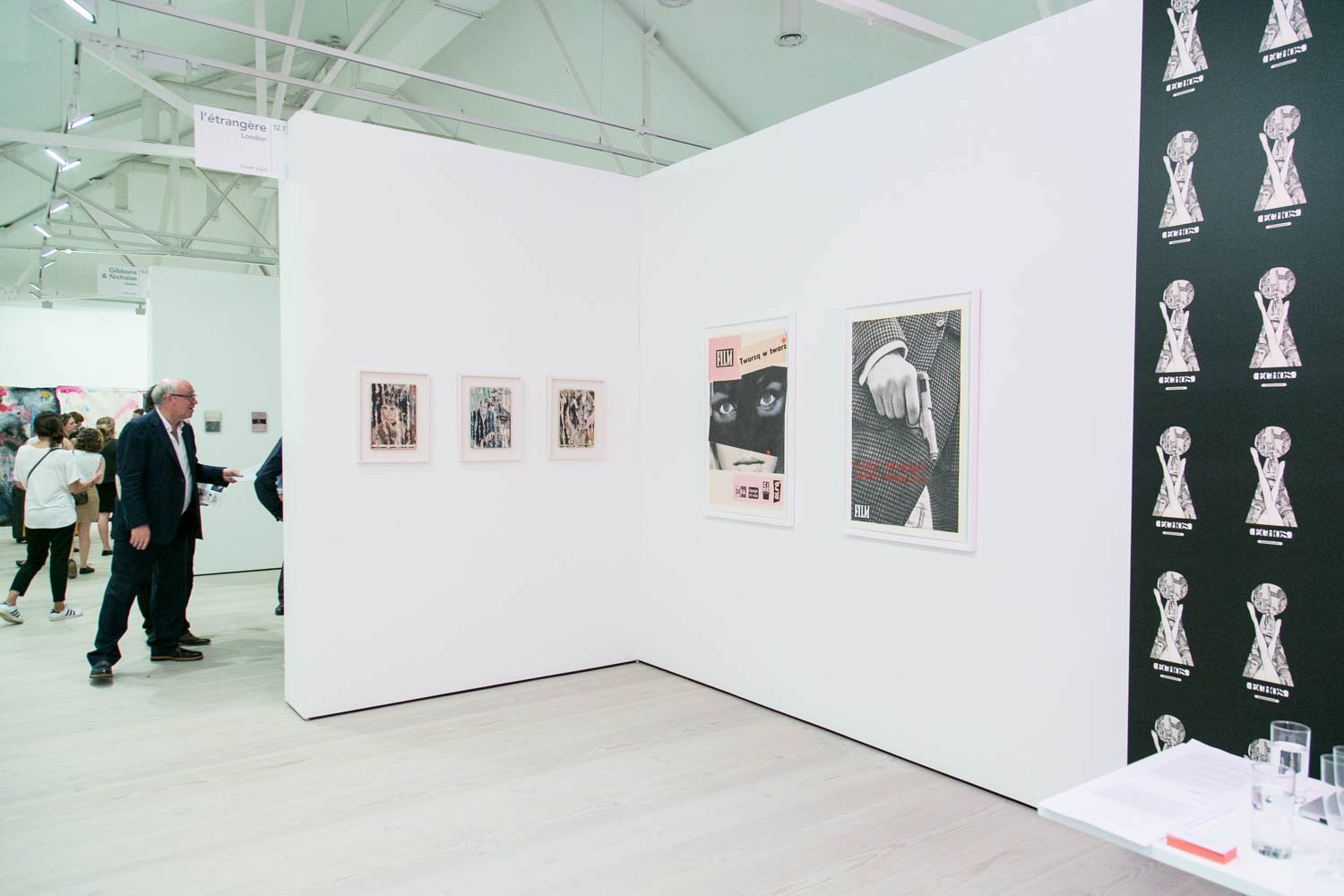
Installation view of the booth of l’étrangère at START2016. Courtesy START Art Fair and the Saatchi Gallery.
A solo presentation of work by the Singapore-born artist WeiXin Chong at London’s A.I. offered crisply scanned arrangements of debris found on the night streets of Paris in the series Toute La Nuit. Fragile objects floating on a lush black background, they are at once oneiric and prosaic, bringing together dead flowers, feathers, shattered glass, condom wrappers, and loose bolts. A delicate series of sketches, almost invisible on charcoal-grey paper, depict isolated examples of her family’s rumpled underwear, a gesture both affectionate and slightly troubling.
Much confusion was generated by Dionisio González’s mischievous Trans-Acciones series, showing at Marbella’s Yusto/ Giner. González’s schtick is the preparatory paraphernalia of contemporary architecture—CAD renderings, model making, CGI movies—and the industry’s fetishization of its Modernist forebears. Drawing on recognisable elements in the work of luminaries such as Marcel Breuer and Erich Mendelsohn, he creates fantastical “lost” structures by the architects, complete with fake plans, photo portraits of them with the buildings, and even films of recognisable commentators such as Rem Koolhaas expounding the entirely fictional ouevre’s importance.
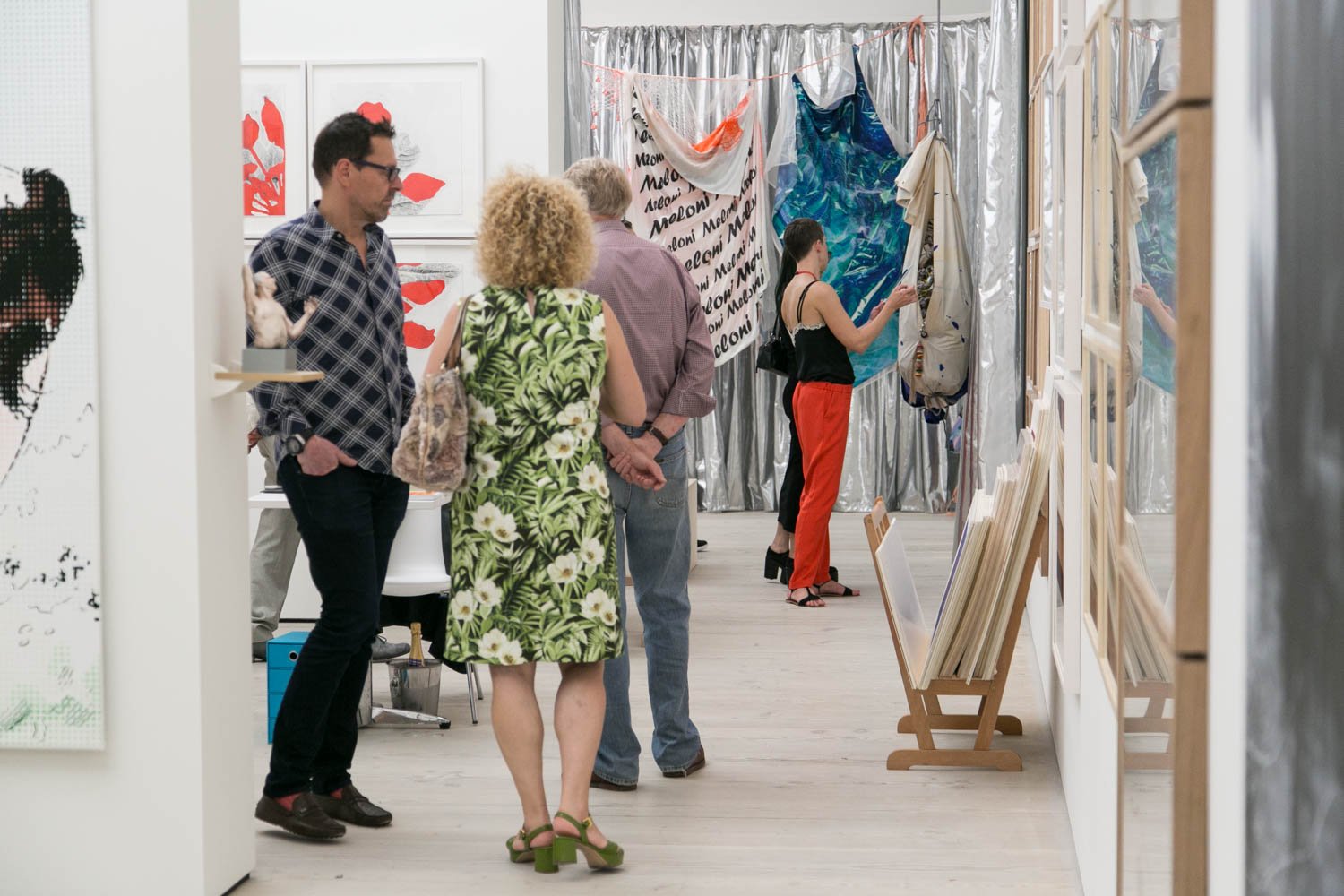
Installation view at START Art Fair, Saatchi Gallery, 2016. Courtesy START Art Fair and the Saatchi Gallery.
“We’re delighted that the fair now is now attracting a serious and international set of collectors,” Ratnam commented the morning after the VIP view. “Established London collectors such as Richard Greer mixed with the new generation of collectors such as Kaimar Maleki and international collectors such as Geetika Jain, and it was also great to see museum directors such as Scottish National Gallery of Modern Art’s Simon Groom.”
“Galleries reported good sales and strong interest from a good set of collectors,” Ratnam told artnet News. “The paintings of Todor Tamas (Z Angles Gallery, Cluj) and David Quinn (Gibbons and Nicholas, Dublin) have sold very strongly, and a number of booths such as Erdmann Contemporary (Cape Town), Gallery SoSo (Heyri) reported advance sales.”